How Orthopedic Rehab Helps with Post-Surgery Recovery
Reimagining Recovery: The Power of Orthopedic Rehabilitation

Understanding the Role of Rehab in Post-Surgical Healing
Orthopedic rehabilitation is a critical component of post-surgical care, helping patients regain mobility, strength, and independence after injury or surgery. This comprehensive process involves personalized therapy plans and a multidisciplinary approach aimed at optimizing recovery outcomes. The following sections explore how orthopedic rehab supports healing, the techniques involved, and the stages of recovery—highlighting its importance for restoring function and improving quality of life.
The Crucial Role of Rehabilitation in Orthopedic Recovery
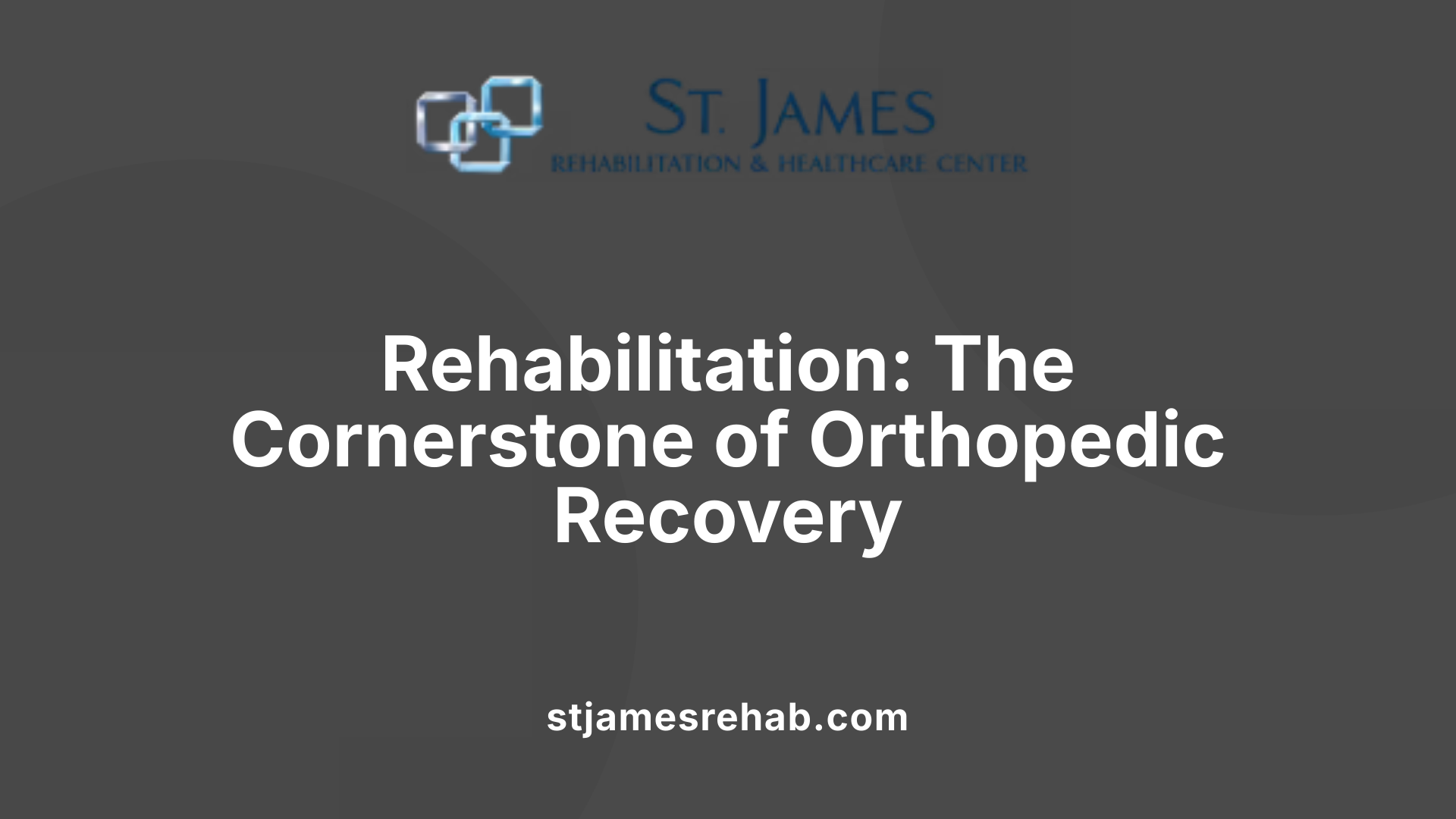
What role does rehabilitation play in the recovery process for orthopedic patients?
Rehabilitation is an essential component in the healing journey of orthopedic patients. It helps restore mobility, rebuild muscle strength, and improve overall function after injury or surgery. This process is carefully structured and supervised by medical professionals to ensure safety and effectiveness.
A typical rehabilitation program includes physical therapy techniques such as manual therapy, guided exercises, and modalities like heat, cold, electrical stimulation, and ultrasound. These interventions aim to reduce pain, decrease swelling, and enhance blood flow to the affected area, which accelerates healing.
Early engagement in rehabilitation activities is crucial. It not only minimizes risks such as scar tissue formation and joint stiffness but also prevents complications like muscle atrophy and poor circulation. Physical therapists develop personalized treatment plans that adapt as the patient progresses, addressing specific needs such as restoring joint motion or improving balance.
Rehabilitation also involves occupational therapy and sports rehab strategies. Occupational therapy helps patients regain the ability to perform daily tasks safely, using adaptive tools and strategies, while sports rehab may focus on returning athletes to their specific activity levels.
The overall goal is to facilitate a swift and safe return to normal activities, reduce long-term issues, and enhance quality of life. Through a combination of patient education, motivation, and tailored therapy, rehabilitation ensures a comprehensive recovery process that aligns with each patient's unique condition and recovery goals.
How tailored programs support individual healing needs
Personalized rehab plans are designed based on the patient's specific surgery, medical history, activity level, and personal goals. These programs might include progressive exercises to gradually rebuild strength, flexibility, and endurance.
By customizing treatment, healthcare providers can address particular challenges, such as managing scar tissue, improving joint mobility, or strengthening weakened muscles. This tailored approach ensures that recovery is efficient, safe, and aligned with the patient's lifestyle.
The multidisciplinary nature of orthopedic rehabilitation involving physical therapy, occupational therapy, and sports rehab
Orthopedic recovery often involves a team of specialists working collaboratively. Physical therapists focus on physical healing—restoring movement and reducing pain.
Occupational therapists help patients adapt their daily routines and modify habits to ensure safety while regaining independence.
Sports rehabilitation professionals target athletes or active individuals aiming to return to high-level performance.
This multidisciplinary approach ensures comprehensive care, addressing not only physical recovery but also emotional and functional well-being, ultimately supporting patients in returning to their previous activity levels successfully.
Benefits and Outcomes of Post-Surgical Physical Therapy
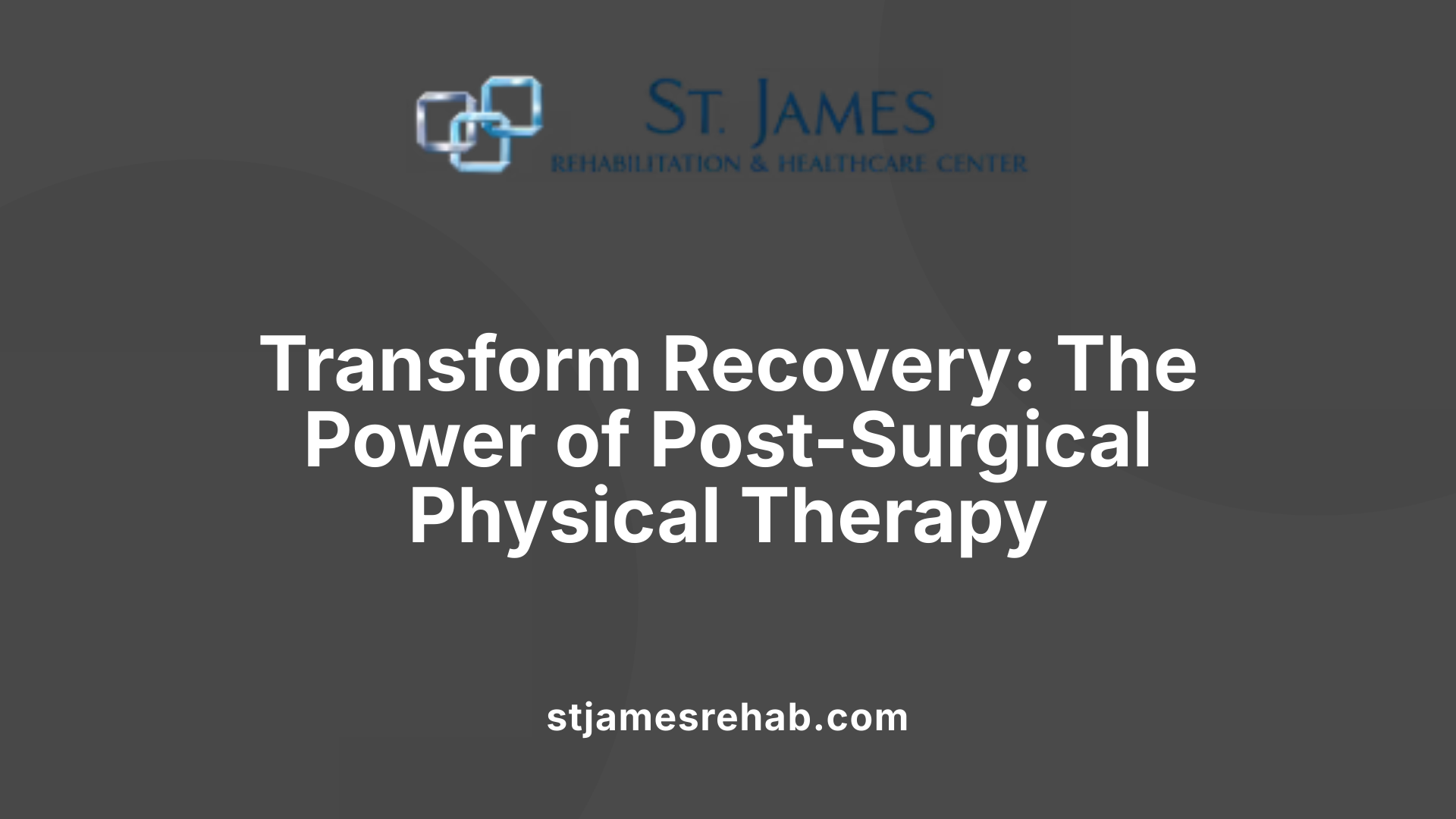
What are the benefits of post-surgery rehab?
Post-operative physical therapy plays a vital role in ensuring effective healing and a smoother recovery process. One of its primary advantages is promoting faster recovery times. Through guided exercises and therapies, patients can regain their mobility, strength, and flexibility more quickly than they might on their own.
Pain management is another significant benefit. Techniques like manual therapy, heat, cold, electrical stimulation, and targeted exercises help reduce discomfort and inflammation. This holistic approach minimizes reliance on pain medications and accelerates healing.
Restoring joint and muscle function is crucial after surgeries involving the musculoskeletal system. Physical therapy helps rebuild muscle strength, improve flexibility, and increase overall mobility, enabling patients to return to daily activities and work efficiently.
Beyond physical improvements, psychological benefits are profound. Motivation and confidence are bolstered as patients observe steady progress, fostering a positive outlook during recovery. Supportive therapy and education from skilled therapists reinforce safety and proper body mechanics.
Overall, customized post-surgical rehabilitation improves several key outcomes. It reduces complication risks like scar tissue formation and joint stiffness, optimizes functional results, and promotes independence. Engaging in physical therapy not only speeds up recovery but also enhances long-term health and quality of life.
Phases and Techniques in Post-Operative Rehabilitation
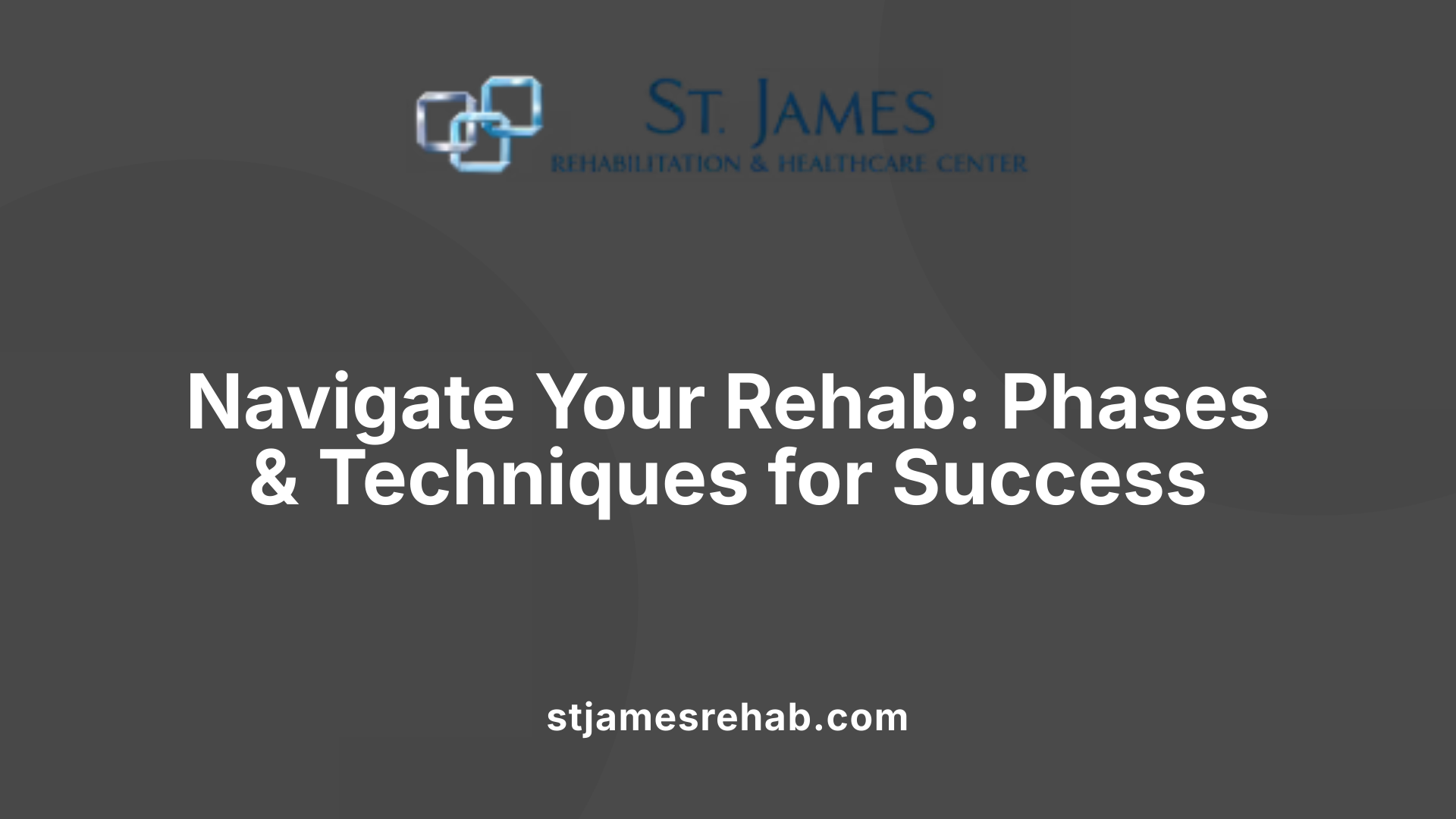
How does rehab work after surgery?
Post-surgery rehabilitation is a carefully structured journey aimed at helping patients regain their strength, mobility, and independence after medical procedures, especially orthopedic and cardiac surgeries. It usually begins within a few days after surgery, depending on the type of operation and medical advice.
The process is divided into distinct phases, each focused on specific goals.
Early recovery centers on pain control and gentle movement. Patients work on managing discomfort through techniques like massage, heat, cold, and light exercises. The goal is to reduce swelling, improve blood flow, and prevent complications like blood clots or muscle atrophy.
Intermediate stage involves gradually increasing activity levels. Patients focus on restoring joint flexibility, rebuilding muscle strength, and increasing endurance through targeted exercises. This phase might include resistance training, balance exercises, and functional movements that prepare patients for everyday activities.
Late recovery emphasizes advanced exercises and functional movements. Patients work towards recreating normal movement patterns, performing complex tasks, and returning to work, sports, or household activities. Therapists introduce more challenging strengthening routines and coordination drills.
Throughout these phases, various techniques are employed to facilitate healing and improve outcomes.
Manual therapy includes hands-on techniques like massage and joint mobilization to enhance tissue flexibility and reduce scar tissue formation.
Therapeutic exercises are tailored stretches, strengthening activities, and movement drills that match the patient's progress. These are designed to restore mobility, flexibility, and muscle endurance.
Modalities such as ultrasound, heat, cold, and electrical stimulation are used to reduce pain and inflammation, promote blood flow, and support tissue healing. For example, ultrasound therapy can help break down scar tissue and improve mobility, while electrical stimulation can assist in muscle reactivation.
Engaging in this comprehensive approach, under the guidance of experienced physical therapists, supports safe recovery, minimizes complications, and maximizes functional gains, helping patients return to their normal routines more quickly.
Rehabilitation Techniques and Exercises for Optimal Recovery
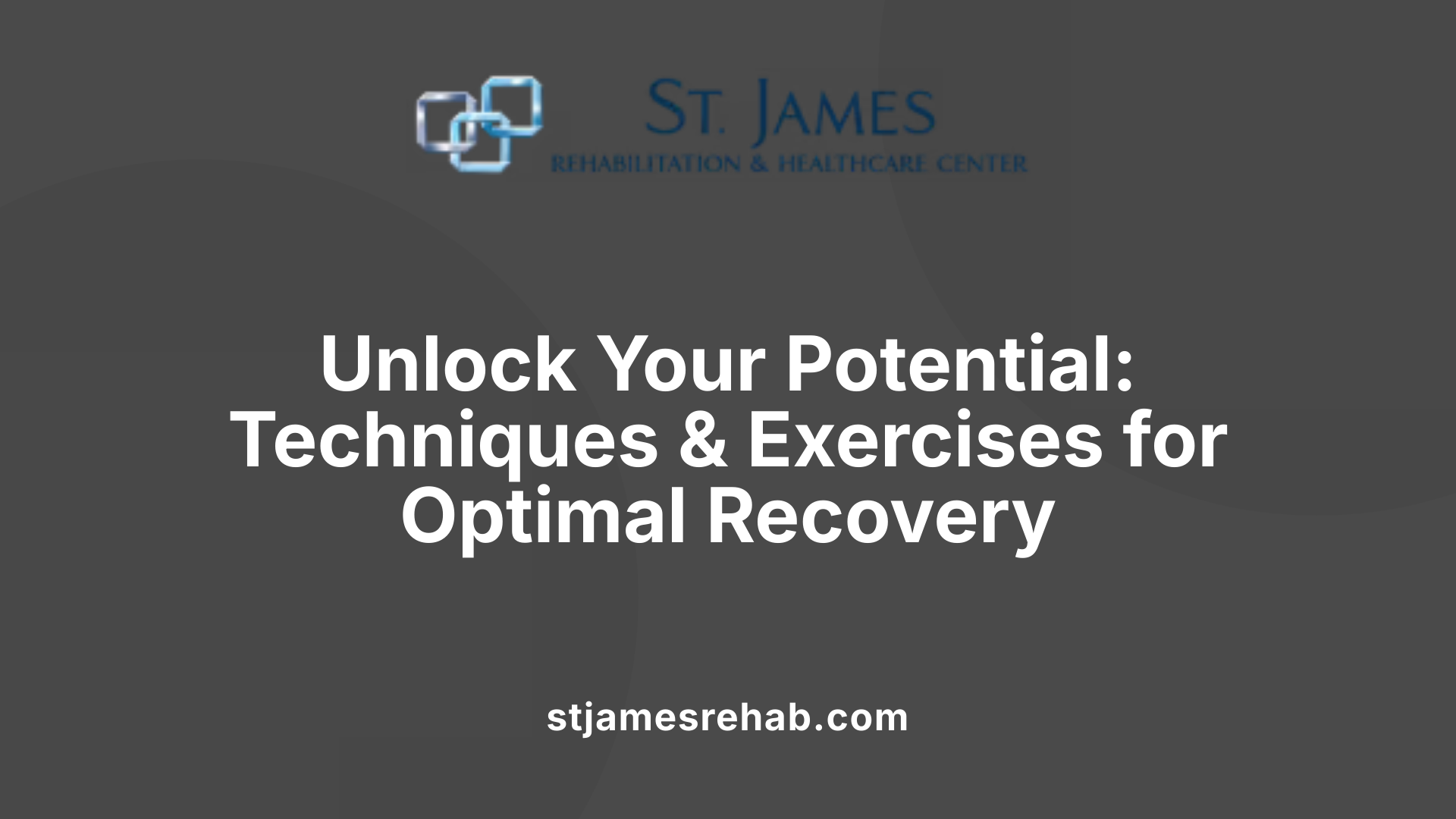
What techniques and exercises are used in orthopedic rehab?
Orthopedic rehabilitation employs a comprehensive set of techniques and exercises to support healing and restore function after surgery or injury. These methods are tailored to meet each patient's specific needs and stage of recovery.
Manual therapy, including soft tissue mobilization and tissue manipulation, plays a crucial role in reducing scar tissue formation and improving joint mobility. These hands-on techniques help alleviate stiffness and enhance flexibility.
Range-of-motion exercises are fundamental in regaining joint flexibility. Gentle stretching routines are performed to prevent stiffness and encourage full movement, which is often limited post-surgery.
Strengthening exercises using resistance bands, free weights, or bodyweight are essential for rebuilding muscle strength and endurance around the affected area. These exercises support stability and facilitate a return to daily activities.
Balance and coordination training are also incorporated, such as standing on one foot or using balance boards. These activities help restore functional movement, improve stability, and lower the risk of falls.
Additional modalities like ultrasound therapy, electrical stimulation, heat, and cold are commonly used in conjunction with exercises. They help reduce pain, decrease inflammation, promote tissue healing, and manage discomfort effectively.
Engaging in this variety of techniques ensures a balanced approach to recovery, maximizing mobility, strength, and overall function while minimizing post-surgical complications.
| Technique/Exercise | Purpose | Additional Details |
|---|---|---|
| Manual therapy, tissue mobilization | Improve joint mobility, reduce scar tissue | Hands-on approaches by physical therapists |
| Range-of-motion exercises | Restore flexibility, prevent stiffness | Stretches and gentle movement activities |
| Strengthening exercises | Rebuild muscle strength and endurance | Resistance bands, weights, or body-weight exercises |
| Balance and coordination training | Enhance stability, prevent falls | Standing on one foot, stability exercises |
| Modalities like ultrasound, electrical stimulation, heat, cold | Reduce pain, inflammation, promote healing | Often used alongside active exercises |
Optimizing recovery involves a blend of these targeted techniques, guided by a skilled therapist to ensure safety and effectiveness.
Supporting Recovery Through Lifestyle, Education, and Emotional Well-Being
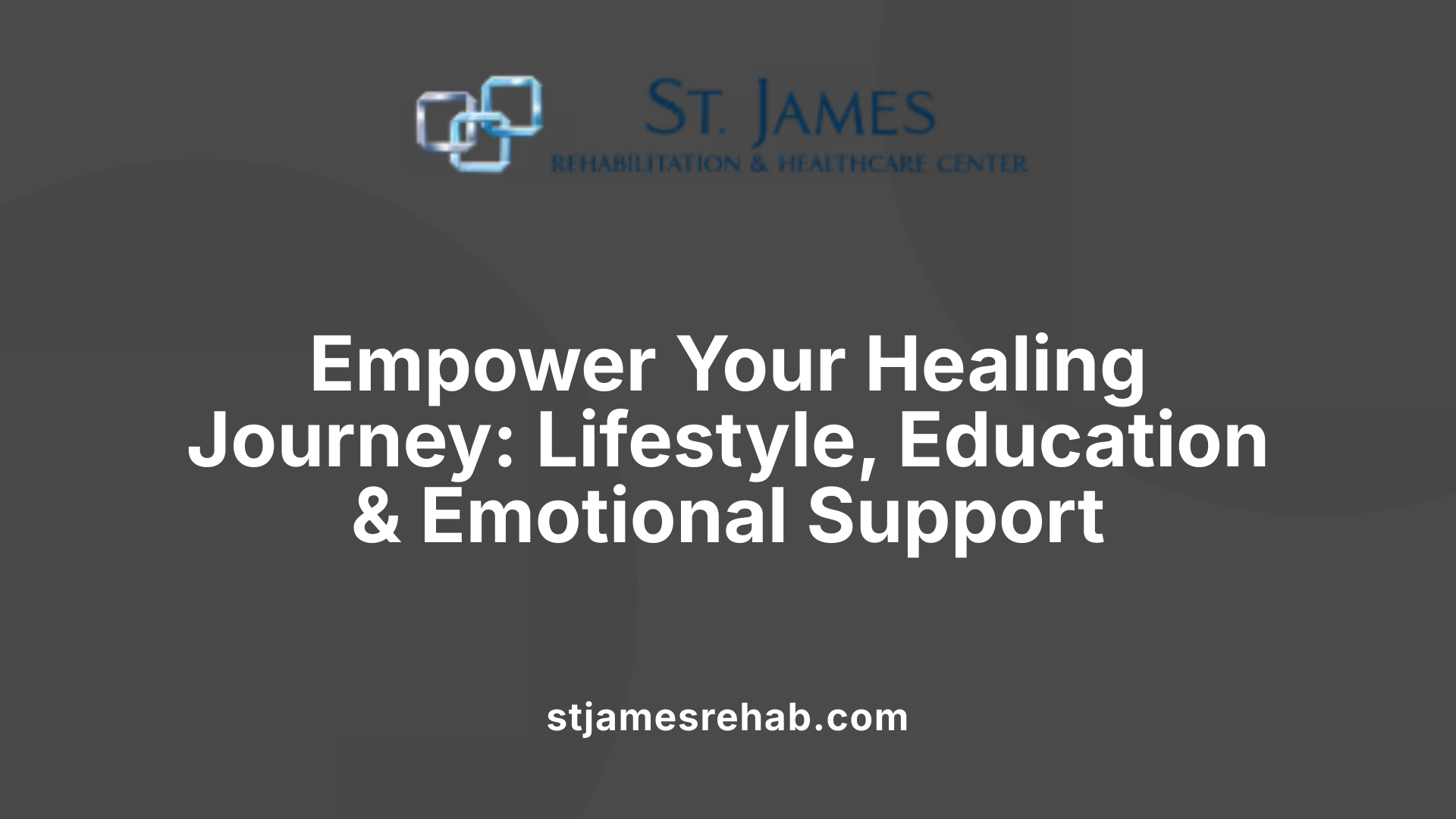
Why is rehabilitation so important to the healing process?
Rehabilitation plays a crucial role in the body's recovery following surgery or injury. It helps restore mobility, strength, and function, enhancing overall quality of life. Tailored programs focus on individual goals—whether returning to sports, work, or daily activities—and involve a team of health professionals working together.
Through pain management, flexibility exercises, and strength training, rehabilitation addresses the specific needs of each patient. It also emphasizes prevention—improving posture and muscle strength to lower the chance of future injuries or setbacks.
Beyond physical improvements, rehabilitation boosts confidence and independence. By accelerating healing and ensuring proper recovery, it reduces the risk of complications like scar tissue formation or chronic pain. Overall, engaging in consistent, guided rehab helps individuals regain their normal activities faster and with less discomfort.
How patient education, proper nutrition, and emotional support contribute to recovery
Educating patients on body mechanics, posture, and movement techniques helps prevent re-injury and promotes safer activity levels.
Supporting healing through good nutrition and rest provides the foundation for tissue repair and energy levels. Encouraging healthy habits ensures optimal conditions for recovery.
Emotional well-being is equally important. Therapists and care teams offer motivation and psychological support to keep patients engaged and positive through the rehabilitation journey.
Strategies for injury prevention and maintaining progress
Patients are taught safe movement practices and activity modifications to avoid injury. Regular communication with healthcare providers ensures the rehab plan remains effective.
Setting realistic goals and maintaining consistency in exercises and daily activities are vital for lasting success. Building a support network of family and friends can also bolster motivation.
By combining physical activity, education, good nutrition, and emotional support, rehabilitation not only speeds up recovery but also lays the groundwork for sustained health and injury prevention.
Enhancing Outcomes Through Dedicated Rehabilitation
Orthopedic rehabilitation is a cornerstone of effective post-surgical recovery, ensuring patients regain full function, reduce pain, and return to their daily routines safely and confidently. By leveraging advanced techniques, personalized plans, and supportive care, rehabilitation maximizes healing, minimizes complications, and enhances overall quality of life. Engaging fully in a structured rehab program, guided by experienced professionals, empowers patients to achieve optimal health outcomes and enjoy a renewed sense of independence.
References
- The Role of Physical Therapy in Orthopedic Rehabilitation Recovery
- The Science of Healing: The Role of Physical Therapy After Surgery
- Post-Surgery Rehabilitation: How Physical Therapy Aids Recovery
- How Physical Therapy Aids Your Post-Surgery Recovery
- The Role of Physical Therapy in Post-Operative Recovery
- Post Surgery Rehabilitation: Smooth and Speedy Recovery
- The Role of Physical Therapy in Post-Surgical Recovery
- The Importance of Physical Therapy in Orthopedic Recovery
- Physical Therapy After Surgery: What to Expect






